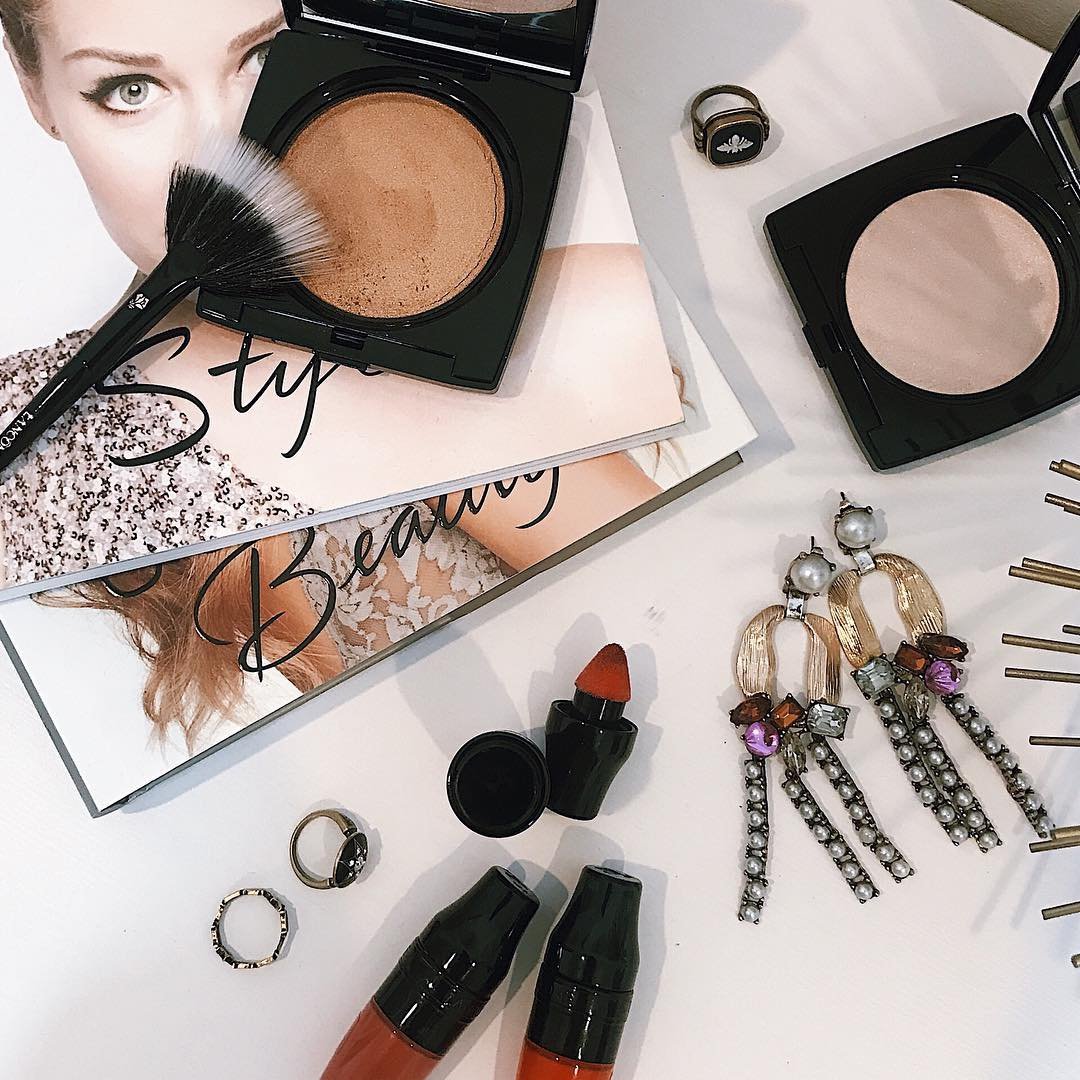Facts about cosmetics aren’t something we typically think about each morning as we are going through our beauty routine. Facts about cosmetics will help you understand the beauty industry as it is today. Not to mention you’ll realize how lucky we are to have products that aren’t toxic! Take a look at this quick history of cosmetics!
Snapshot Survey
Thanks for sharing your thoughts!
Please subscribe for your personalized newsletter:
Ancient Egyptians
There are many facts about cosmetics, but did you know that the ancient Egyptians and Cleopatra were believed to be some of the first to use cosmetics as far back as 4,000 B.C.? Egyptians would fill in their brows and line their eyes with Kohl—a cream made from the fat of sheep mixed with powdered lead or antimony and soot. Ancient Egyptians were also known to take baths in milk and honey to soften and beautify their skin from head to toe!
The ancient Egyptians also used henna to dye their hair and nails, and used scented oils and perfumes to enhance their beauty. They also used castor oil to keep their skin hydrated and protect it from the sun. In addition, the Egyptians used red ochre to create blush and rouge. The use of cosmetics wasn't just for vanity, but was believed to have spiritual and medicinal benefits as well. For example, Egyptians would use eye makeup to protect their eyes from the sun and ward off evil spirits. They also believed that the use of cosmetics could help them look more youthful and attractive.
Romans & Greeks
Around 100 A.D., the Romans stayed beautiful by using wine as a cheek stain and painted their faces and bodies with chalk to achieve a pale, whitish look. They even created acne treatments by combining barley flour and butter. The Romans also dyed their hair, but they used lye—causing many people to lose their hair and forcing them to wear wigs. The Greeks stained their cheeks and lips using vermillion and the juice from berries. They darkened their lashes with black incense.
The use of cosmetics dates back to ancient Egypt, where people used kohl to outline their eyes and henna to dye their nails and hair. In the Far East, people used rice powder and beeswax to whiten their skin. In ancient Rome, women used lead-based powders to lighten their skin and enhance their beauty. During the Middle Ages, many women used a combination of arsenic and vinegar to achieve a pale complexion. In the Victorian era, women used a combination of white lead and mercury to achieve a lighter complexion. In the 20th century, the use of cosmetics was popularized by the beauty industry, which began to produce a variety of products for the modern woman. Today, cosmetics are used to enhance beauty and create a more attractive look.
The Middle Ages
Unlike today when tans are coveted, in the Middle Ages being pale was all the rage! Women wanted so badly to be pale that they allowed themselves to be painted or even bled in order to achieve the colorless look. Tattoos became popular during this time period in addition to colored eyeshadow, such as blues, greens, grays, and browns.
The 15th-16th Centuries
During this time period, royalty and their court were the only ones using cosmetics. Fragrances were becoming popular in France, and whitening agents were being used for the face. Whitening products were composed of carbonate, hydroxide, and lead oxide—ingredients that were stored in the body, causing physical problems that sometimes resulted in muscle paralysis or death.
The 1800s
By the 1800s, almost all social classes wore cosmetics, but many products still contained toxic ingredients. Eyeshadows and lip stains contained poisonous ingredients like mercuric sulfide and belladonna. Zinc oxide, which is still used today, was introduced as a facial powder to replace deadly arsenic versions.
Meaning is not what you start with but what you end up with.
The 1900s
During the 1900s, the commercial cosmetics industry began to grow substantially. In 1913, mascara that’s packaged as we know it today was developed by the French chemist and perfumer Eugène Rimmel. The product was a bit messy and inconsistent, but it was non-toxic and became popular across Europe. Worldwide acceptance of mascara came when T.L. Williams developed a similar packaging for his new company, Maybelline. In the later 1900s, makeup became a way for women to express themselves. Women wore makeup that suited their style and taste, and didn’t strictly stick to the trends.
Present Day
The cosmetics and beauty industries total over $20 billion in annual sales and is consistently growing. Emphasis is placed on anti-aging and looking young. Many different makeup looks are embraced—from the natural look to dramatic, theatrical looks.
Although cosmetics have changed drastically throughout the course of history, the goal to look our best remains the same. Most of us would be lost without the brilliant invention known as makeup! Which development throughout the history of cosmetics do you think is most significant?


/filters:quality(70)/thumbs/13/hssm0hghalqk3zqvj6bzy_1080x1350.jpg)
/filters:quality(70)/skincare/thumbs/my/il/z41uy3ul55395a5e06ae9289796698_400x400.jpg)
/filters:quality(70)/beauty/thumbs/mw/yz/easpu84h_400x400.jpg)
/filters:quality(70)/skincare/thumbs/vi/d9/h4wdk3vc_400x400.jpg)
/filters:quality(70)/skincare/thumbs/w7/oi/kvmq1gh5_400x400.jpg)
/filters:quality(70)/skincare/thumbs/gv/nc/tqf89aav_400x400.jpg)
Feedback Junction
Where Thoughts and Opinions Converge